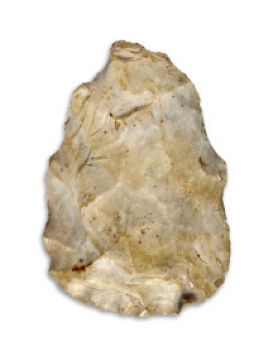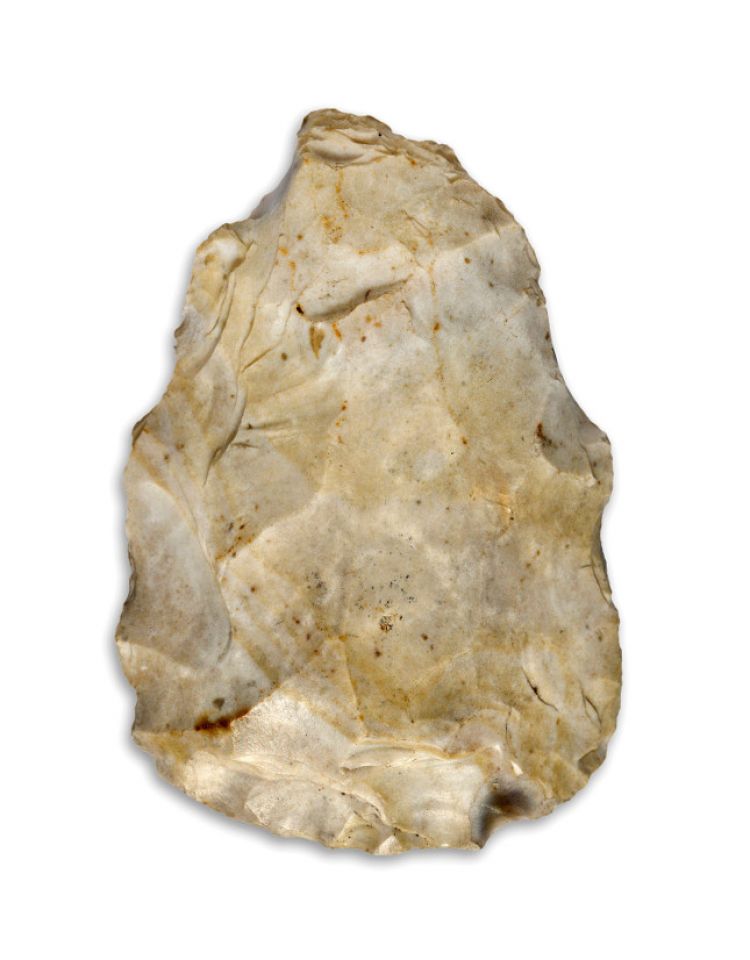Hand axe

The hand axe, or biface, was one of the preferred tools of hunters of the Middle Palaeolithic, at a time when Neanderthal man occupied a large part of Western Europe, between 75,000 and 50,000 years ago.
The two-faced axe required sophisticated techniques for its manufacture. It was hewn on both sides, the general shape of the tool and its subsequent fining down being obtained through a very precise series of blows. The sharp edges of the sides were obtained by removing fine chips. The biface was used to cut, scrape and slice the meat and skins of animals killed in the hunt.
The discovery of this type of object is relatively rare in Alsace because of the copious loess deposits covering the sites of the oldest periods. Loess consists of thin layers of yellow earth deposited by wind to depths of several metres in the Alsatian plain during cold periods in the Quaternary.
